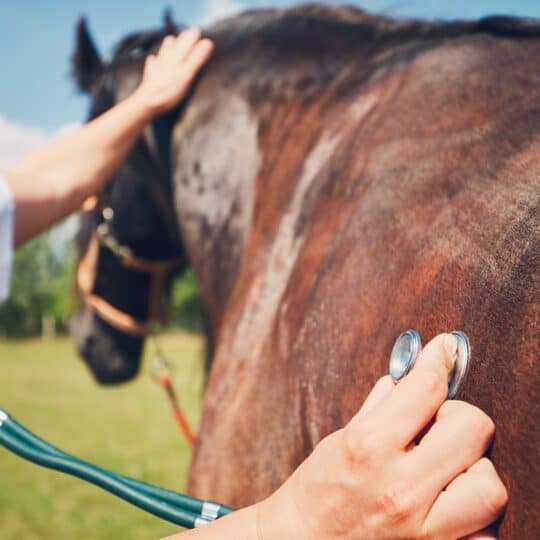Measure Fitness Levels with Equine Monitoring
Use these Devices to Help

How important is it to track your horse’s heart rate? If you want a glimpse into their overall health, it’s important. Plus, it’s not that hard to determine with the right equipment. Easily measure fitness levels with equine monitoring devices. Keep track of a range of vital signs to track what’s happening with your horse.
Focus on these Vitals
For an accurate picture of the health and wellbeing of your horse, nothing substitutes an evaluation done by your vet. However, you can track daily vitals before, during, and after exercise. This helps catch certain issues in between vet visits.
Pay attention to the following vitals. Measure in the morning or evening when the horse is usually more relaxed to determine what’s a normal baseline. Then note when any variations arise.
- Heart rate. Monitoring heart rate before, during, and after exercise tells you how hard your horse is working and how quickly they recover. A rise in normal heart rate is an indication your horse is in distress. This could be from pain or injury.
- Respiration. Another indication of fitness levels depends on how fast your horse is breathing. Rates naturally go up while exercising, A key component in overall health is to note how easily respirations return to a normal rate.
- Body temperature. Nobody likes having a fever, even horses. Temperature tells us a lot about levels of comfort, whether it’s illness or exercise-related.
When you regularly track your horse’s vitals at the same time every day, you’re able to make a better exercise plan and monitor their overall health and fitness.
Recovery time is equally important in measuring fitness levels. The faster the rate, the better in shape. When these numbers start to dwindle, you’ll need to consider many factors, including age.
Measure Fitness Levels with Equine Monitoring Devices
There are many ways to measure vitals. There’s the ole trusty stethoscope and timer to hear and count beats. More high-tech wearable devices measure multiple vital signs and sync with your smartphone. This makes it easy to track vitals over time, save them, and even share them with trainers, vets, and other parties.
When your horse is wearing a monitor, you’ll get a clearer picture of how measurements change throughout the training session. You can pick out patterns in behavior related to spikes in heart rate or temperature. Pay close attention to trends in different stats rather than an exact number.
Wearable monitors are also ideal for determining how much to ask from a horse after injury or illness. You’ll be able to tell how they’re feeling before you push them too far from the data you collect in real-time.
Different wearable devices are designed for the girth, halter, harness, blanket, and other areas depending on how they’re being used and what’s being tracked. Most of the newer monitors connect to an app that makes analyzing the data quick, easy, and shareable.
No matter what you’re measuring, do yourself and your horse a favor and start paying closer attention to fitness levels. The simple task gives you a better picture of horse health and wellbeing. A healthy horse is a happy horse—which should make you a happy owner.